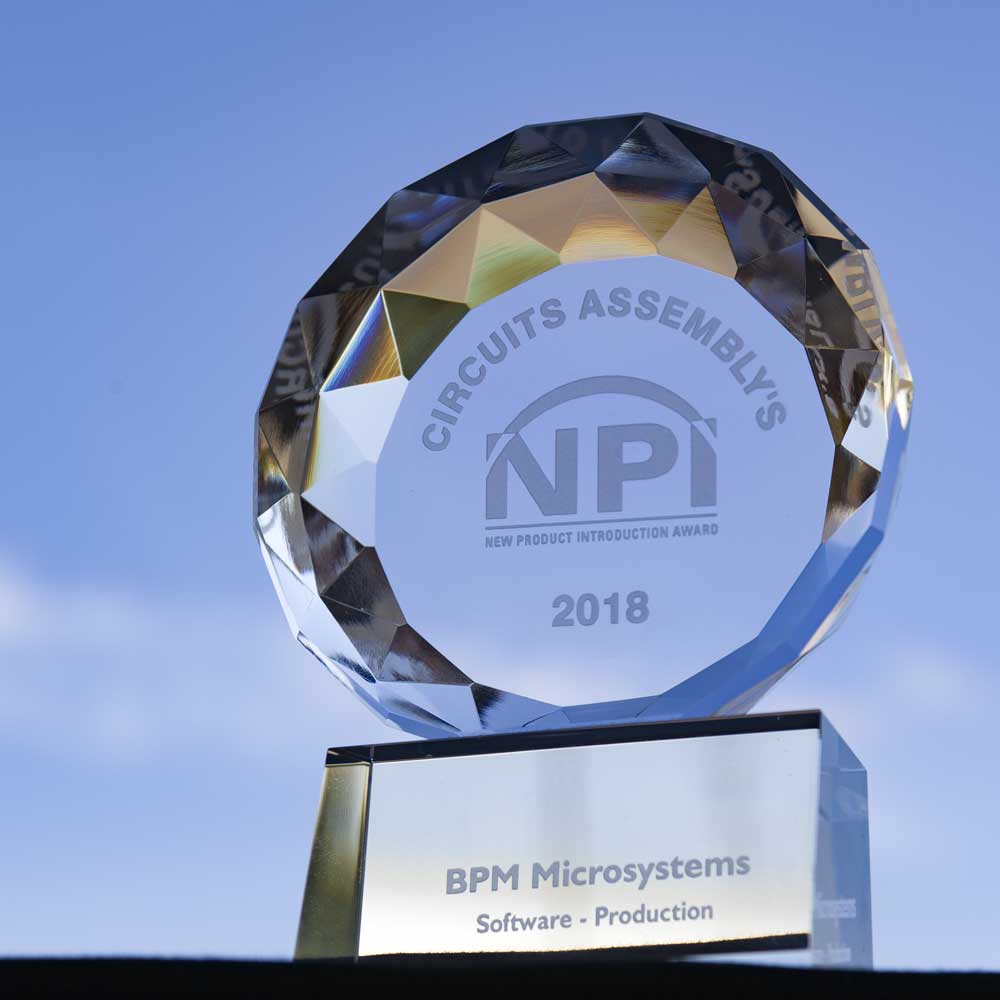
by Scott Bronstad | Jun 22, 2023 | Case Study, Technology
Part 4 – Unveiling the Power of Offline In-Socket Programming
Having journeyed through the advantages of high-quality assurance (part I), flexibility (part II), and simplified troubleshooting (part III) offered by offline in-socket programming, we now turn our attention to another salient feature – efficiency. This pivotal aspect of the offline methodology promises potential time and cost savings, alongside a range of other benefits that significantly contribute to the productivity of device programming.
Capitalizing on Scalability
A single automated programming system can program millions of devices annually. This impressive capacity often equates to supporting multiple production lines with just one machine and a part-time operator per shift.
Leveraging Batch Programming
Offline programming systems have the ability to program multiple devices concurrently, a stark contrast to in-line methods that program devices sequentially. This parallel programming approach dramatically enhances throughput, allowing more devices to be programmed within a reduced timeframe.
Minimizing Downtime
As offline programming operates independently from the main assembly line, it prevents assembly line downtime. Any arising issue during programming can be addressed independently, sparing the entire production line from interruption.
 Adapting Work Schedules
Adapting Work Schedules
The decoupling of programming from the overall production process offers greater flexibility in scheduling. This permits programming to be carried out during off-peak hours or when the assembly line is inactive, maximizing resource utilization.
Suppose a Contract Manufacturer (EMS company) operates multiple production lines producing a variety of products for various clients. Using an automated offline programming system, they can program millions of devices per year and dozens or more different “ICs,” supporting several production lines with only a part-time operator per shift. This dramatically increases throughput and reduces overall operational costs.
Reducing Rework and Scrap
Offline programming assures individual programming and verification of each chip before assembly. This approach reduces the cost and time associated with rework and scrap, thereby improving the overall efficiency of the manufacturing process.
Improving Inventory Management
The capability to program chips in advance facilitates better inventory management and smoother production scheduling. This proactive strategy can diminish stockouts and overages, boosting operational efficiency and adaptability to demand changes.
Optimizing Resource Allocation
Offline programming facilitates a more effective allocation of human and equipment resources. While programming occurs, other assembly, testing, and packaging tasks can continue in parallel, optimizing the entire manufacturing process.
Boosting Energy Efficiency
In many instances, offline programmers are more energy-efficient than their in-line counterparts. They program multiple chips simultaneously and are operational only when needed, as opposed to running continuously alongside the assembly line.
In essence, the efficiency benefits from offline in-socket programming translate into substantial cost savings and productivity improvements. This makes it an invaluable asset for electronic manufacturing companies. Join us for the next part of our series, where we will explore the versatility that offline in-socket programming brings to semiconductor manufacturing.
Read Part I | Read Part II | Read Part III

by Scott Bronstad | Jun 20, 2023 | Case Study, Technology
Part 3 – Unveiling the Power of Offline In-Socket Programming
In our exploration of device programming thus far (See Part I, See Part II), we’ve addressed how it ensures high quality and offers unparalleled flexibility in streamlining production workflows. Now, we transition to another distinct advantage – troubleshooting. In an industrial setup, resolving problems promptly and effectively is crucial for maintaining efficiency and productivity. Let’s examine how offline in-socket programming augments this vital task.
Isolation of Issues
A significant advantage of offline programming is the individual handling of each chip, separate from the main assembly line. This approach ensures that if an issue arises, it can be traced to a specific chip or batch, preventing a bottleneck in the overall assembly process, unlike in-line programming, where a single snag might trigger considerable delays as the source of the problem is tracked and rectified.
Direct Access and Control
Offline programming provides engineers with direct access to the devices being programmed. This proximity facilitates a closer inspection of issues, enabling the identification of root causes and the application of appropriate solutions. Engineers can observe the programming process in real-time, run tests, and iterate solutions within a controlled environment, thereby optimizing the troubleshooting process.
Production Line Continuity
An extraordinary benefit of offline programming is its ability to maintain production line continuity even during troubleshooting. In the event of a faulty chip, it can be extracted and replaced or reprogrammed, all without halting the assembly line. This ability to minimize disruptions plays a critical role in maintaining operational efficiency and reducing downtime.
The Power of Advanced Diagnostics
Modern offline programming systems often come equipped with advanced diagnostic tools. These provide detailed insights into potential issues, like problems within specific memory sectors or programming steps, thereby accelerating the troubleshooting process. First Articles can be produced well in advance of production volume to qualify the programming process.
Risk Mitigation as a Priority
Offline programming also plays a crucial role in risk mitigation. If a programming error surfaces or a chip proves faulty, the issue can be intercepted and addressed early in the process, preventing its propagation down the assembly line or into the final product. This early intervention saves valuable time, and resources, and can shield the company’s reputation from potential damage.
Let’s consider an automotive component manufacturer programming microcontroller devices for an advanced driver-assistance system (ADAS). If a programming issue arises during in-line production, it could disrupt the whole assembly line. However, with offline programming, any such issues can be isolated and resolved without affecting the assembly process, allowing for efficient troubleshooting.
In a nutshell, offline programming greatly enhances the efficiency and effectiveness of troubleshooting. This capability empowers manufacturers to uphold high-quality standards and minimize the fallout from any issues that might arise. Stay tuned as we delve into the fourth part of our series, where we’ll discuss how this method bolsters efficiency in the next chapter of our journey through the advantages of offline in-socket programming.
Read Part I | Read Part II

by Scott Bronstad | Apr 10, 2018 | Awards, News
2018 New Product Introduction Award Presented at IPC APEX EXPO
HOUSTON, TX-Apr. 10, 2018- BPM Microsystems, a leading global provider of IC device programming solutions, announces that is has been awarded the 2018 New Product Introduction Award in the category of Production Software for its WhisperTeach™ solution on the BPWin™ platform. The award was presented to the company during a ceremony that took place at IPC APEX on Tuesday, February 27, 2018.
“Pick and place errors account for the majority of quality issues when programming semiconductor devices. The vacuum systems can easily blow these delicate devices out of place, or cause them to jump up to the nozzle. This can result in poor job yield and the potential for inaccurate alignment,” said Sarah Kamery, Director of Product Marketing for BPM Microsystems. “With devices getting smaller and smaller, operators need automated solutions to quickly and accurately teach jobs, and WhisperTeach™ provides that solution.”
WhisperTeach™ uses artificial intelligence and an enhanced pneumatic system to learn and determine the accurate z-height between the nozzle and device. BPM invented WhisperTeach™, patent pending, to help programming centers and manufacturers reduce setup time per job, improve cycle time, reduce changeover time, and improve job accuracy.
The annual NPI Awards recognize companies that introduce innovative new products for electronics assembly equipment, materials, software, and PCB fabrication. Award recipients are chosen by an independent panel of industry experts.

by Scott Bronstad | Dec 4, 2017 | New Product, News, Technology
HOUSTON, TX-Dec. 4, 2017-SMT Global & Packaging interviews James Holava, BPM Director of Global Sales, at Productronica about new BPM innovations. BPM is now on its 9th Gen site technology platform, which is backward compatible with most 6th, 7th, and 8th generation sockets. 9th Generation supports the majority of the 39,000+ library* of components and devices that BPM has collected since 2002. This helps clients leverage many existing sockets and gives clients ease regarding the lifespan of future investments.
With the trend in the industry of higher density and smaller package devices, 9th Generation technology also supports the eMMC devices and the HS400 programming mode at 200 MB per second. This provides the throughput manufacturers need today in modern production. To improve handling for smaller device packages, BPM also introduced a new technology called WhisperTeach™. WhisperTeach™ automatically teaches the Z-height of components and removes the opportunity for manual defects.
BPM 9th Gen site technology is available on the 4900 and 3900 automated programming systems, as well as the 2900L and 2900 systems. To learn more about BPM 9th Generation site technology and programmers, please contact BPM.
*As of publication
by Scott Bronstad | May 21, 2013 | Technology
HOUSTON, TX–May 21, 2013– BPM Microsystems announces that with the release of BPWin version 5.32.0, tape loader users now have the option to advance their tape reel by millimeters, mils or pocket count at the end of a job for an improved teaching process.
By installing the latest BPWin software release, automated system users with a V-TEK tape loader can now enter the desired leader/trailer tape length in either millimeters or mils via the “Tape Options Wizard.” The software will automatically calculate the number of pockets needed to advance the reel at the end of a job session. This allows for a faster, more intuitive teaching process, leading to greater machine uptime.
The new software feature conforms to V-TEKS’s leader/trailer tape reel advance method and is an enhancement over previous versions of BPWin that required users to manually calculate or count the number of pockets to advance at the end of a job.
BPM Microsystems is committed to providing its customers with the best user experience possible. The company adds new software features to each full software release to ensure that its customers receive continuous improvements.
Additional software features released in BPWin 5.32.0 can be found in the software release notes located under the Help menu of BPWin.

 Adapting Work Schedules
Adapting Work Schedules

